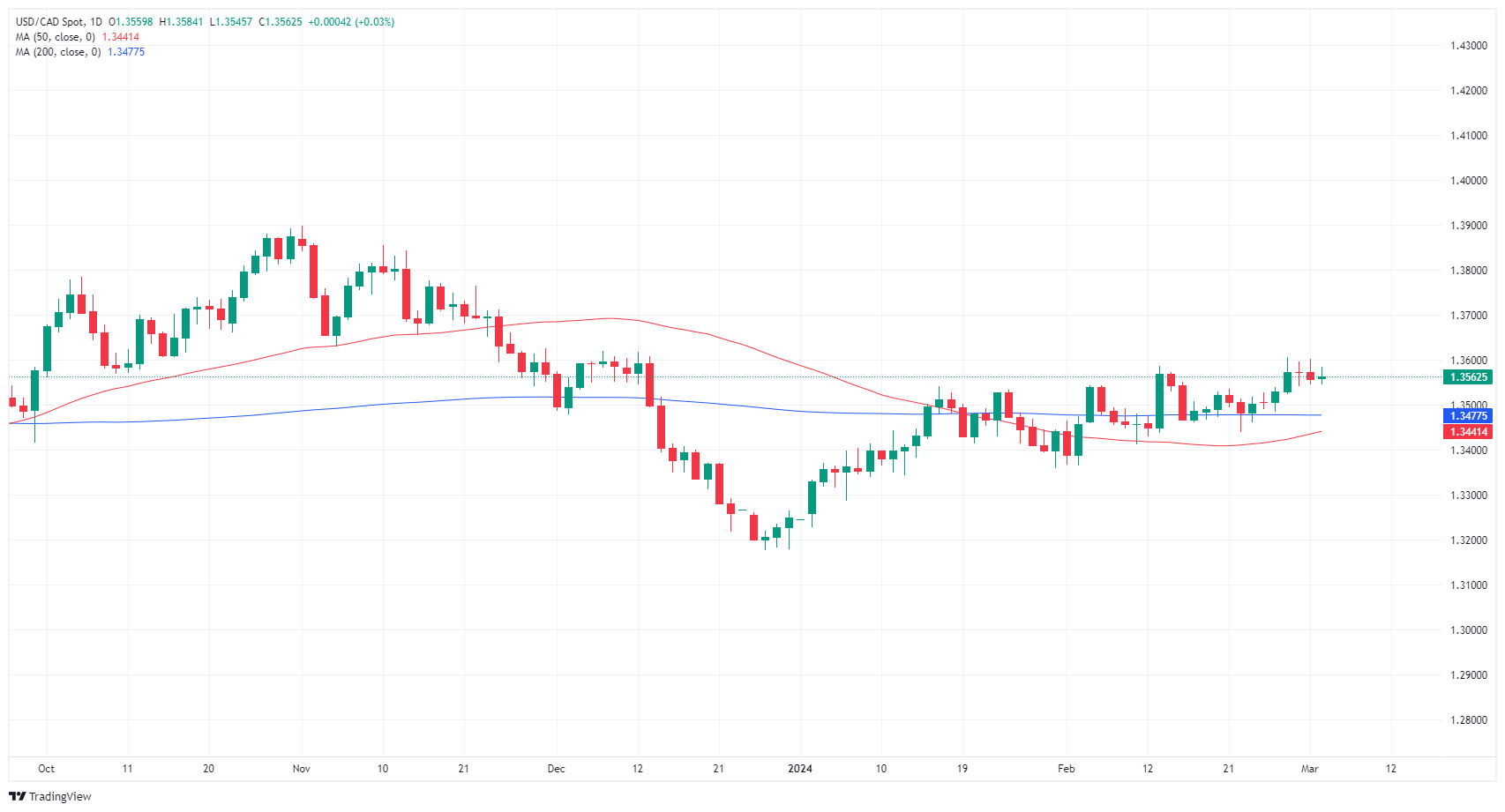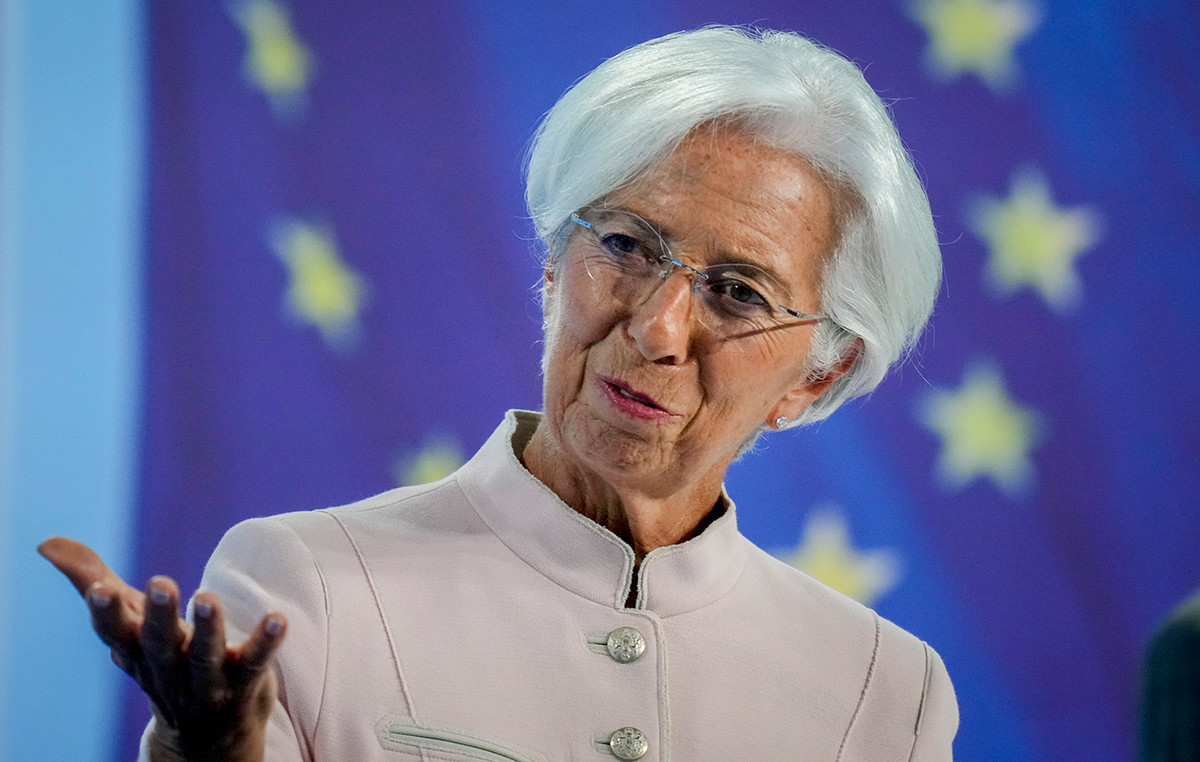- The Canadian dollar is in a middle position as investor appetite stirs.
- The Bank of Canada will announce interest rates in mid-week.
- US NFPs will be in focus during the week.
He Canadian dollar (CAD) moves at known levels on Monday, with markets awaiting a new decision from the Bank of Canada (BoC) on interest rates and this week's key US Non-Farm Payrolls (NFP) report, which will be published on Friday. The BoC is expected to keep rates at 5% on Wednesday, and investors expecting a rate cut from the Federal Reserve (Fed) will be watching softening US economic numbers this week. .
This week's Canadian data will determine BoC rates, as Friday's Canadian jobs numbers will be overshadowed by US NFP jobs numbers. Canada's unemployment rate is expected to rise this week, and current market forecasts point to a pullback in the US NFP numbers.
Daily Market Summary: Canadian Dollar Sideways as Markets Rely on Rate Cuts
- Quiet start to the week as markets focus on the likelihood of a Fed rate cut.
- Last week's weaker US data leads to rising June rate cut hopes.
- The BoC is expected to hold rates on Wednesday.
- On Tuesday, the February ISM US Services Purchasing Managers' Index (PMI) is expected to decline to 53.0 from 53.4.
- Markets will be watching weaker US data as investors expect the weakening US economy to increase the odds of a Fed rate cut.
- CME FedWatch Tool sees a more than 70% chance of a Fed rate cut in June with the current cut.
- BoC Governor Tiff Macklem is expected to make no move at Wednesday's meeting.
- The US ADP employment change for February is scheduled for Wednesday and is expected to show an increase in US employment to 150,000 for the month, up from 107,000 the previous month.
Price of the Canadian Dollar today
Below is the percentage change of the Canadian Dollar (CAD) against the main currencies listed today. The Canadian dollar appreciated against the Japanese yen.
| USD | EUR | GBP | CAD | AUD | JPY | NZD | CHF | |
| USD | -0.17% | -0.29% | 0.08% | 0.10% | 0.24% | 0.05% | 0.07% | |
| EUR | 0.17% | -0.12% | 0.24% | 0.27% | 0.41% | 0.22% | 0.24% | |
| GBP | 0.29% | 0.12% | 0.35% | 0.39% | 0.53% | 0.33% | 0.36% | |
| CAD | -0.08% | -0.23% | -0.35% | 0.04% | 0.16% | -0.03% | 0.00% | |
| AUD | -0.10% | -0.27% | -0.39% | -0.03% | 0.12% | -0.05% | -0.03% | |
| JPY | -0.24% | -0.42% | -0.57% | -0.20% | -0.15% | -0.21% | -0.17% | |
| NZD | -0.05% | -0.21% | -0.33% | 0.03% | 0.06% | 0.19% | 0.03% | |
| CHF | -0.08% | -0.24% | -0.36% | 0.00% | 0.03% | 0.16% | -0.03% |
The heat map shows the percentage changes of the major currencies against each other. The base currency is chosen in the left column, while the quote currency is chosen in the top row. For example, if you choose the euro in the left column and scroll down the horizontal line to the Japanese yen, the percentage change in the box will represent EUR (base)/JPY (quote).
The Canadian Dollar (CAD) remains flat on Monday, with the CAD losing around four tenths against the GBP to start the trading week. Against the US Dollar (USD), the CAD remains virtually sideways, trading at a tenth of a percentage point from Monday's opening bids.
The USD/CAD pair is trading in a range for the third day in a row. The price is stuck in a range between 1.3600 and 1.3550. The 1.3600 level is the immediate short-term technical ceiling, and the price continues to trade above the 200-day SMA at 1.3477.
USD/CAD Hourly Chart
daily chart
Frequently Asked Questions about the Canadian Dollar
What factors determine the price of the Canadian dollar?
The key factors that determine the price of the Canadian dollar (CAD) are the level of interest rates set by the Bank of Canada (BoC), the price of oil, Canada's main export product, the health of its economy, inflation and the trade balance, which is the difference between the value of Canadian exports and its imports. Other factors are market confidence, that is, whether investors bet on riskier assets (risk-on) or look for safe assets (risk-off), with the risk-on being positive for the CAD. As its largest trading partner, the health of the US economy is also a key factor influencing the Canadian dollar.
How do Bank of Canada decisions affect the Canadian dollar?
The Bank of Canada (BoC) exerts significant influence over the Canadian Dollar by setting the level of interest rates that banks can lend to each other. This influences the level of interest rates for everyone. The BoC's main objective is to keep inflation between 1% and 3% by adjusting interest rates up or down. Relatively high interest rates are usually positive for the CAD. The Bank of Canada can also use quantitative easing and tightening to influence credit conditions, with the former being negative for the CAD and the latter being positive for the CAD.
How does the price of oil affect the Canadian dollar?
The price of oil is a key factor influencing the value of the Canadian Dollar. Oil is Canada's largest export, so the price of oil tends to have an immediate impact on the value of the CAD. Generally, if the price of oil rises, the CAD also rises, as aggregate demand for the currency increases. The opposite occurs if the price of oil falls. Higher oil prices also tend to lead to a higher probability of a positive trade balance, which also supports the CAD.
How does inflation data influence the value of the Canadian Dollar?
Although inflation has traditionally always been considered a negative factor for a currency, as it reduces the value of money, the opposite has actually happened in modern times, with the relaxation of cross-border capital controls. Higher inflation often leads central banks to raise interest rates, attracting more capital inflows from global investors looking for a lucrative place to store their money. This increases the demand for the local currency, which in the case of Canada is the Canadian Dollar.
How does economic data influence the value of the Canadian dollar?
The published macroeconomic data measures the health of the economy and may have an impact on the Canadian dollar. Indicators such as GDP, manufacturing and services PMIs, employment and consumer confidence surveys can influence the direction of the CAD. A strong economy is good for the Canadian dollar. Not only does it attract more foreign investment, but it may encourage the Bank of Canada to raise interest rates, resulting in a stronger currency. However, if economic data is weak, the CAD is likely to fall.
Source: Fx Street
I am Joshua Winder, a senior-level journalist and editor at World Stock Market. I specialize in covering news related to the stock market and economic trends. With more than 8 years of experience in this field, I have become an expert in financial reporting.







